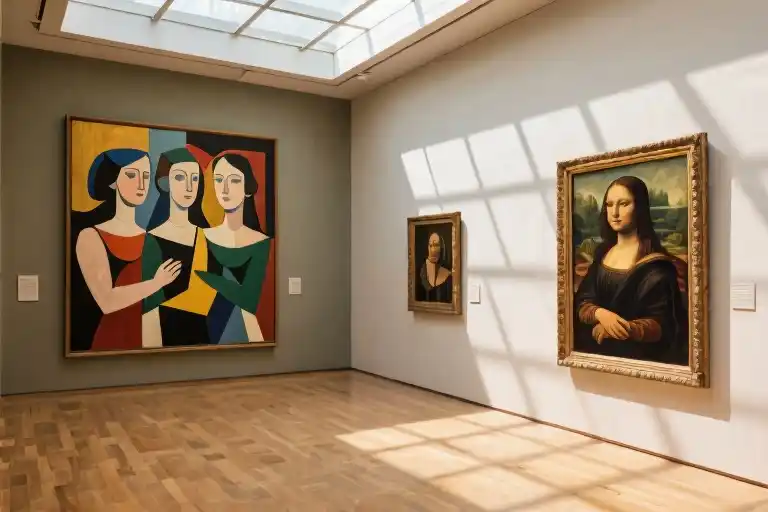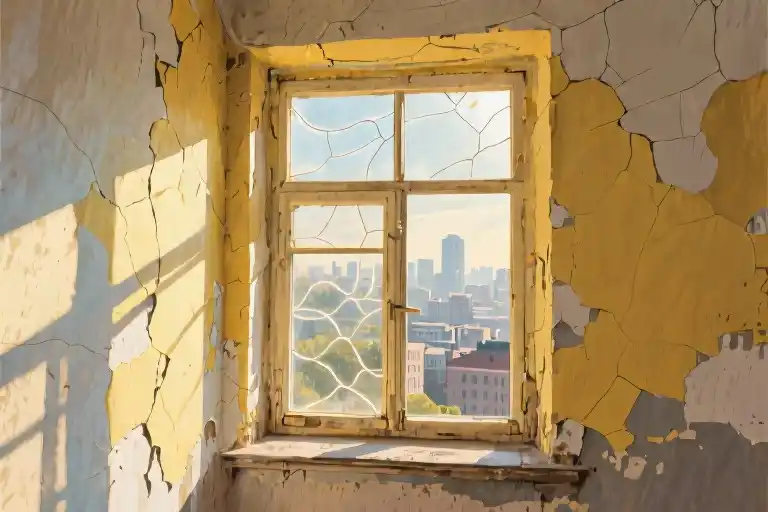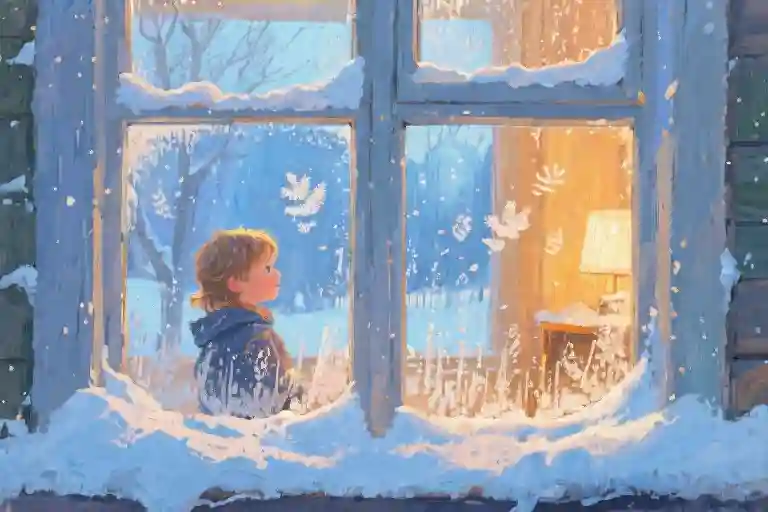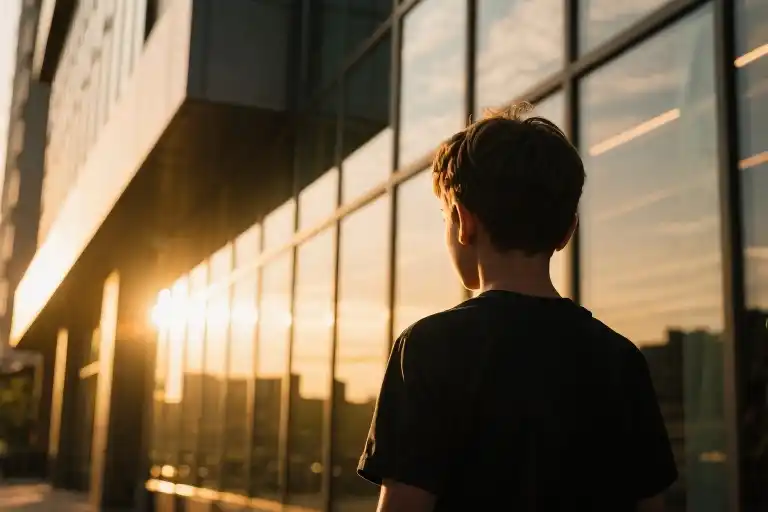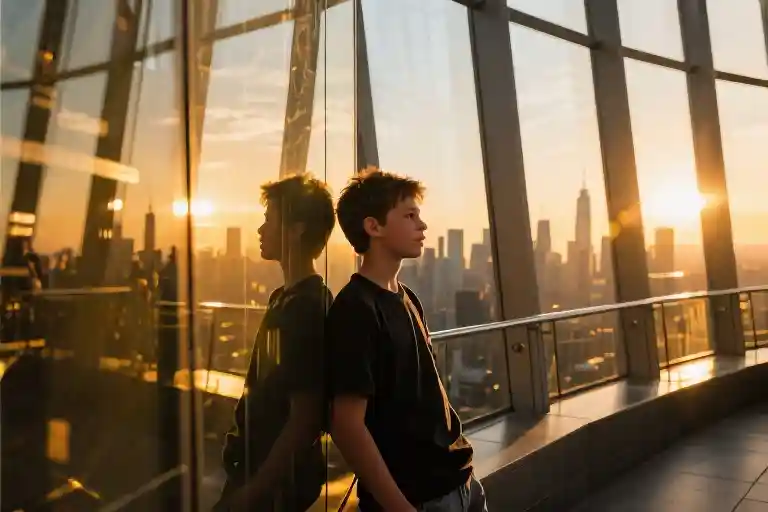The afternoon light filtered through the museum’s skylights as we wandered past Renaissance portraits, their subjects frozen in oil-painted perfection. My youngest tugged at my sleeve near a particularly stern 17th-century nobleman – ‘Dad, why do all these people look like they’re waiting for a sneeze that never comes?’ We laughed, but his next observation caught me off guard as we rounded the corner into the modern wing: ‘I think Picasso broke art.’
That blunt childhood verdict hung in the air between us, echoing my own long-ago art school doubts. There’s something universally unsettling about witnessing art’s abrupt pivot from luminous Madonnas to fractured faces, a shift my son instinctively blamed on the Spanish painter. His comment reminded me of an old Korean saying about the emperor with donkey ears – that uncomfortable truth everyone knows but nobody dares voice aloud.
Standing before Les Demoiselles d’Avignon, I watched his nose wrinkle at the angular, mask-like faces. ‘It’s like someone took all the rules,’ he gestured at the earlier galleries, ‘and threw them out the window.’ The museum’s chronological layout had accidentally become the perfect teaching tool, visually tracing Western art’s 500-year march toward realism… until the 20th century’s sudden left turn. That Picasso’s revolutionary canvases followed rooms of painstakingly rendered drapery and anatomy only heightened the dissonance.
What my bright fifth-grader couldn’t yet grasp was how photography’s emergence around 1839 had quietly changed everything. As we paused by a placard explaining cubism’s multiple perspectives, I realized this museum visit might unravel differently than planned. The story wasn’t about Picasso destroying tradition, but about artists responding to seismic technological change – a narrative far more fascinating than simple rebellion. Camera lenses could now capture reality faster and more accurately than any brush, leaving painters to ask: If not perfect representation, then what?
This became our shared mystery to solve that afternoon, moving through galleries where fruit bowls dissolved into geometric planes and portraits became emotional maps rather than facial records. Each unconventional canvas seemed to whisper the same question my son had voiced aloud – one that still lingers in museum corridors worldwide: When machines master imitation, what becomes the purpose of human art?
The Shockwaves of Technological Revolution
Walking through the museum galleries that day, my son’s observation about Picasso lingered in my mind like an unfinished sketch. What he didn’t realize – what most casual observers don’t immediately grasp – is that the dramatic shift in artistic expression didn’t begin with brushstrokes, but with the mechanical click of a shutter.
The Pursuit Before the Lens
For nearly five centuries before photography’s invention, Western art had been perfecting the illusion of reality. From the mathematical precision of Renaissance perspective to Rembrandt’s masterful chiaroscuro, each generation of artists developed new techniques to capture the visible world with increasing accuracy. The 19th century saw this pursuit reach its zenith with hyper-detailed academic paintings that could make fabric textures palpable and skin appear warm to the touch.
This wasn’t merely technical skill – it represented a profound cultural belief that art’s highest purpose was to mirror nature. Royal academies established rigid hierarchies where historical paintings (considered the most intellectually demanding) sat above portraiture, which in turn outranked still lifes. The ability to deceive the eye wasn’t just admired; it was institutionalized.
The Daguerreotype Earthquake
Then in 1839, Louis Daguerre introduced his photographic process to the French Academy of Sciences, sending tremors through the art world. Suddenly, what had taken master painters weeks to achieve could be captured in minutes with mechanical precision. Early photographs displayed details invisible to the naked eye – the individual threads in lace collars, the subtle gradations of shadows in folds of drapery.
Artists reacted with a mixture of awe and existential dread. The French painter Paul Delaroche famously declared “Painting is dead” upon seeing his first daguerreotype, while others like Delacroix became early adopters, using photographs as reference material. The crisis wasn’t about unemployment (as some feared) but about purpose – if machines could replicate reality perfectly, what remained for human artists?
Picasso’s Pioneering Response
This is where figures like Picasso enter our story not as destroyers, but as explorers charting new territories. When the young Spanish artist began deforming human figures in works like “Les Demoiselles d’Avignon,” he wasn’t rejecting skill – he was asking what art could do that photography couldn’t. While cameras recorded surfaces, Picasso sought to depict multiple perspectives simultaneously, to show the emotional truth beneath appearances.
The cubist revolution that followed wasn’t arbitrary distortion; it was a logical extension of artistic possibilities suddenly made visible by photography’s limitations. Where photographs froze moments, art could show time’s passage. Where lenses captured objective reality, brushes could express subjective experience. This seismic shift didn’t invalidate previous artistic achievements – it expanded our understanding of what art might become.
The Camera’s Unintended Gift
Paradoxically, by excelling at representation, photography liberated painting from its mimetic chains. Artists who might have spent careers perfecting realistic techniques could now explore color relationships (like the Impressionists), emotional intensity (like the Expressionists), or pure form (like the Abstract artists). The camera, initially seen as a threat, became art’s unexpected collaborator – pushing creators toward realms where technology couldn’t follow.
As we stood before a Picasso that museum day, I realized my son was witnessing the same disorientation 19th-century viewers felt when first confronting Impressionism. Every artistic revolution appears destructive until we understand what it’s building toward. The camera didn’t kill painting – it gave it new life by forcing it to evolve beyond what we thought possible.
The Hidden Codes in Our Words
That afternoon at the museum, as my son and I stood before Picasso’s fragmented portraits, something deeper than artistic preference emerged in our conversation. The way we name things – particularly how different cultures describe photography – reveals unconscious frameworks for understanding art itself.
When “Copying Truth” Meets “Drawing with Light”
The Korean word for photograph, sajin (사진), carries profound cultural baggage. Its two Chinese characters tell a complete story: sa (寫) meaning “to copy” or “to depict,” and jin (眞) meaning “the real” or “the true.” Together, they form a linguistic capsule – “a true copy” or “depiction of reality.” This terminology, shared with Japanese but absent in Western languages, positions photography as the ultimate fidelity test for visual representation.
Meanwhile, the English “photograph” derives from Greek roots with entirely different implications: photo (light) + graph (to draw). No mention of truth or reality – just a neutral description of process. Even Mandarin’s zhao pian (照片), meaning “slice of light,” echoes this technical orientation rather than making truth claims.
Vocabulary as Cultural Lens
This linguistic divergence creates subtle but powerful effects:
- The Korean/Japanese framework suggests photography represents an endpoint – the perfected representation artists had sought for centuries
- The Western/Chinese terminology frames it as simply another tool in humanity’s creative arsenal
These differences may explain why abstract art faced greater resistance in some Asian cultures. When your language defines photography as “truth copying,” subsequent artistic movements like Cubism can feel like unnecessary deviations rather than natural progressions.
Beyond Translation
The Chinese zhao pian offers a fascinating middle path. Breaking down to “light” + “slice,” it captures photography’s technical essence while avoiding the philosophical finality of “truth copying.” This linguistic choice proved prescient – China later developed unique photographic styles like composite landscape photography that treated the medium as raw material rather than absolute truth.
Language as Artistic Compass
These vocabulary differences raise profound questions:
- Did Picasso’s Spanish upbringing (where “fotografía” also emphasizes light-writing) make abstraction feel like a natural evolution?
- Could the Korean sajin concept have unconsciously limited early acceptance of non-representational art?
As visitors in that museum, we weren’t just looking at paintings – we were seeing through linguistic frameworks passed down through generations. The words we inherit may shape our artistic expectations long before we ever step into a gallery.
The Crossroads of Art: Between Hyperrealism and Abstraction
Walking through the museum’s modern art wing with my son, we paused before two strikingly different paintings hanging side by side – Mike Dargas’ hyperrealistic portrait that could pass for a high-resolution photograph, and Picasso’s fractured, emotionally charged Weeping Woman. The contrast couldn’t have been more dramatic, yet both were celebrated as masterpieces. My son tilted his head, trying to reconcile these competing visions of what art could be.
When Reality Becomes the Canvas
German artist Mike Dargas represents the pinnacle of hyperrealism, where oil paintings achieve such technical perfection that they challenge our very definition of photography. His works feature droplets of honey cascading down faces with such precision that viewers instinctively reach out to touch the canvas, expecting liquid. This tradition traces back to 19th-century academic painting, where artists like Bouguereau spent months perfecting skin textures and fabric folds.
Yet there’s something unsettling about this perfection. As photography democratized visual accuracy, hyperrealism became less about technical triumph and more about philosophical statement – proof that human hands could still rival machines. The movement raises profound questions: When does technical mastery cross into obsession? Can perfect replication become its own form of abstraction?
The Emotional Algebra of Abstraction
Picasso’s Weeping Woman, painted during the Spanish Civil War, demonstrates how abstraction can convey truths that realism cannot. The fractured planes of the face – the mismatched eyes, the jagged tears – create emotional resonance through distortion. Where hyperrealism shows us what trauma looks like, abstraction makes us feel its disorientation.
This divergence reflects photography’s lasting impact. Once cameras could capture external reality, painters turned inward, developing visual languages for emotions, concepts, and perceptions. Cubism didn’t abandon reality – it sought to represent multiple perspectives simultaneously, much like our minds assemble fragmented memories.
The Cultural Lens of Perception
Studies reveal fascinating cultural divides in art reception:
- Western viewers tend to focus on central objects (a preference rooted in individualism)
- East Asian audiences often perceive artworks holistically (reflecting interdependent worldviews)
- Abstract expressionism initially faced stronger resistance in cultures where art was traditionally representational
These differences aren’t about artistic superiority, but about how we’re conditioned to process visual information. The same neural pathways that help us read facial expressions influence how we interpret painted strokes. When my son called Picasso’s work “ruined art,” he was expressing a perfectly natural cognitive dissonance.
Finding Common Ground
Perhaps the most beautiful development in contemporary art is the erosion of these false dichotomies. Today’s artists like Kehinde Wiley blend hyperrealistic techniques with conceptual frameworks. Digital tools allow for new hybrid forms that transcend traditional categories. Even museums are rethinking chronological displays that once suggested linear progression from “primitive” to “advanced” styles.
As we left the gallery, my son admitted he still preferred Dargas’ technical wizardry, but could now appreciate how Picasso’s distortions served a different purpose. “It’s like comparing a microscope to a kaleidoscope,” he mused. In that moment, I realized our museum visit had accomplished what all great art should – not providing answers, but expanding the questions we’re willing to ask.
When East Meets West: Photography’s Global Artistic Dialogue
Standing before a delicate composite photograph by Lang Jingshan at the museum that day, my son squinted at the label. “This looks like a Chinese painting,” he observed, “but it’s made with a camera?” His confusion mirrored my own first encounter with this fascinating fusion of Eastern aesthetics and Western technology. In our globalized art world, the camera didn’t just change Western art – it sparked creative revolutions across continents, each culture interpreting photography through its own artistic lens.
The Poetic Lens of Chinese Composite Photography
Lang Jingshan’s dreamlike landscapes represent one of the most elegant responses to photography’s challenge. By combining multiple negatives using techniques borrowed from traditional Chinese scroll painting, he created what Western critics called “photo-paintings.” Where European modernists like Picasso fractured reality into geometric planes, Chinese artists like Lang reconstructed reality according to ancient principles of shanshui (mountain-water) composition. The camera became not just a recording device, but a new brush for expressing timeless artistic values – proving that technological progress didn’t have to mean abandoning cultural heritage.
Japan’s Woodblock Revolution in Reverse
The story becomes even more intriguing when we consider how Japanese ukiyo-e woodblock prints, themselves influenced by Western perspective techniques, later revolutionized European art. When Impressionists like Monet and Van Gogh encountered these flattened perspectives and bold outlines, they found permission to break from photographic realism decades before cameras could threaten their relevance. That circular cultural exchange – Western techniques influencing Japanese prints which then liberated Western painting – shows how artistic innovation rarely moves in straight lines. As my son noted while comparing a Hokusai wave with a Monet water lily: “They’re both about the feeling, not just the looking.”
Digital Frontiers and Cultural Crossroads
Today’s digital art revolution raises similar questions to those faced by Lang and the Impressionists. When AI can generate hyperrealistic images in any style, what becomes the artist’s role? Contemporary creators like Refik Anadol answer by using algorithms to visualize unseen dimensions of reality – much like Lang used multiple exposures to capture the essence of a landscape beyond literal representation. The throughline across centuries and cultures remains clear: whether working with ink, oil paint, or machine learning, true artists don’t document what everyone can see, but reveal what only they can imagine.
Walking out of the museum’s contemporary wing, my son suddenly understood: “So photography didn’t actually replace art – it just forced every culture to rediscover what made their art special in the first place?” Beneath the glass ceiling where digital projections morphed between calligraphy and code, I realized this might be photography’s ultimate gift – not ending artistic traditions, but giving them new reasons to remember their roots while reaching for the future.
The Museum Walk Revisited
Our footsteps echoed softly through the marble corridors as we left the exhibition halls behind. My son paused by a bench near the museum’s atrium, his earlier frustration now tempered with curiosity. “So if photography changed everything,” he asked, tracing the pattern on the bench with his finger, “why do we still have artists trying to paint things exactly as they appear?”
The afternoon light slanted through the skylights, casting geometric shadows that Picasso might have appreciated. I smiled, remembering how this conversation had begun hours earlier with his bold declaration about ruined art. Now, surrounded by the very institution that preserved both pre- and post-photography art, our discussion had come full circle.
Beyond Either/Or
Perhaps art never required us to choose between representation and abstraction. The same museum that housed Renaissance masterpieces also celebrated Cubist innovations, suggesting that artistic evolution isn’t about replacement but expansion. Photography didn’t eliminate realistic painting any more than the microwave oven abolished baking – it simply created new possibilities.
Mike Dargas’ hyperrealistic portraits exist in the same century as digital installations that defy physical form. The camera didn’t mark an endpoint for art, but rather a branching path where some continued perfecting visual fidelity while others explored emotional truth through distortion. This duality became clearer as we passed a gallery where visitors alternated between taking smartphone photos of Impressionist works and contemplating abstract expressionist canvases.
Questions Without Answers
As we approached the museum’s exit, my son surprised me with unexpected insight: “Maybe the words don’t matter as much as what we do with them.” His observation cut to the heart of our linguistic exploration. Whether we call it “light-writing” or “truth-copying,” the photographic medium ultimately served as a catalyst rather than a conclusion.
The security guard smiled as we passed through the rotating doors into the golden-hour light. Our conversation would continue over dinner, touching on video game design and AI-generated art – new frontiers that would inevitably reshape creative expression yet again. But for now, we left with a shared understanding that art’s vitality comes not from adhering to any single definition, but from its endless capacity to make us see differently.
What new tools will future generations use to expand our visual vocabulary? And how will our current language shape their artistic revolutions? The questions lingered pleasantly as we walked toward the parking lot, our shadows stretching long behind us on the pavement.

